Share
Discover five key advantages of low-doc business loans for Australian small businesses. Faster approvals, flexible criteria, and preserves working capital.
For many small business owners and self-employed Australians, accessing traditional business finance can be frustrating, especially if your paperwork isn’t up to date. A Melbourne café owner who’s been trading successfully for 18 months but hasn’t completed their first full financial year, or a Geelong tradesperson who’s recently transitioned from employment to self-employment but lacks the extensive documentation traditional lenders require.
Whether you’re newly self-employed, operating a seasonal business, or simply haven’t lodged your latest tax return, you may not meet the criteria set by major lenders. This common challenge affects thousands of Australian entrepreneurs who need funding to grow their businesses, manage cash flow, or seize time-sensitive opportunities.
That’s where low-doc business loans come in. These flexible financing options can provide the capital you need without the traditional documentation hurdles that often delay or prevent loan approval.
Important: Your complete financial situation will need to be assessed before acceptance of any proposal or product.
What are low-doc business loans?
Designed to provide funding without the usual paperwork, low-doc loans are assessed using alternative forms of documentation, like bank statements, BAS, or an accountant’s letter. This approach recognises that traditional financial statements don’t always reflect the true capacity of modern businesses, particularly those in the digital economy or with non-traditional revenue streams.
How low-doc loans differ from traditional business loans
Traditional business loans typically require extensive documentation including detailed financial statements, tax returns for multiple years, comprehensive business plans, and profit-and-loss statements. This documentation requirement can be overwhelming for small business owners who may not have access to professional accounting services or whose business models don’t fit conventional frameworks.
Low-doc business loans streamline this process by accepting alternative verification methods that still demonstrate your business’s financial capacity and repayment ability.
Alternative documentation requirements
Instead of comprehensive financial statements, low-doc lenders may accept recent bank statements (typically 3-6 months) showing business cash flow patterns, Business Activity Statements (BAS) demonstrating GST turnover, accountant’s letters verifying income and business activity, ABN registration and GST certification, invoice records showing ongoing business relationships, asset schedules listing business equipment, and self-declaration statements outlining monthly business turnover.
This flexibility allows lenders to assess your business’s true financial position using documents that may be more readily available and current than traditional financial statements.
Practical applications for Australian businesses
Low-doc loans prove particularly valuable for service-based businesses like consulting firms with project-based income cycles, digital marketing agencies working with online payment systems, and professional services including accounting, legal, and engineering practices. They’re also well-suited to trade and construction businesses such as plumbing, electrical, and building contractors transitioning from employment to self-employment, landscaping services with seasonal revenue patterns, and equipment hire businesses requiring vehicle or machinery finance.
Retail and hospitality operations including café and restaurant owners needing working capital for seasonal fluctuations, online retailers with rapid growth but limited traditional documentation, and tourism operators in regional Victoria preparing for peak seasons also find these products valuable for their financing needs.
Easier access to funds when financials aren’t available
Low-doc loans are a practical solution when tax returns or full financial statements aren’t available. Instead, lenders can assess your application using other documents like recent bank statements or BAS. This flexibility opens up funding opportunities for business owners who would otherwise be knocked back by mainstream lenders.
Common scenarios requiring alternative documentation
Many legitimate business situations can result in unavailable or outdated financial documentation. Recently established businesses operating for less than 12-18 months may not have completed financial years, while franchise operations recently acquired might not yet be reflected in personal tax returns. Business acquisitions often require immediate working capital before new ownership appears in documentation.
Seasonal and cyclical operations face particular challenges, with tourism businesses where recent performance doesn’t match historical annual averages, agricultural enterprises between harvest cycles, and retail operations preparing for peak trading periods like Christmas or back-to-school. Business structure changes, including partnerships converting to companies, sole traders incorporating their operations, or merged operations combining multiple entities, can also create documentation gaps.
Professional service delays due to complex business transactions, tax lodgement extensions for legitimate business reasons, or audit requirements taking longer than anticipated for larger operations can leave businesses with outdated financial records despite strong current performance.
Alternative verification methods provide solutions
Low-doc lenders use sophisticated assessment techniques that go beyond traditional documentation. These may include:
- Cash flow analysis using bank statement data to understand revenue patterns and business stability
- Industry benchmarking comparing your business metrics against sector norms and expectations
- Asset verification assessing business assets and equipment that support ongoing operations
- Transaction history review examining payment patterns and customer relationships
Victorian business opportunities
For Victorian businesses, this approach proves particularly relevant given the state’s diverse economic landscape. From Melbourne’s service sector to regional agricultural businesses, seasonal variations and non-traditional business models are common. Low-doc financing can support:
- Hospitality businesses managing seasonal tourism fluctuations
- Retail operations preparing for peak trading periods
- Trade businesses expanding their equipment or vehicle fleets
- Professional services investing in technology or premises upgrades
Faster approval turnaround
With fewer hoops to jump through, the approval process is often faster than standard loans. If timing is critical, say you need to purchase equipment, pay a supplier, or grab a short-term opportunity, a low-doc loan can help you act quickly and keep your business moving.
Speed advantages in practice
Business opportunities rarely wait for perfect timing or complete documentation. Low-doc loans recognise this reality by offering expedited assessment processes that can match the pace of business decision-making. Whether you need urgent equipment replacement when machinery breaks down affecting operations, technology upgrades required for contract compliance, vehicle purchases for expanding service delivery, or manufacturing equipment needed to fulfil large orders, speed can be critical to success.
Supplier and inventory opportunities also require quick action, including early payment discounts offering 2-5% savings on large supplier invoices, bulk purchase opportunities providing significant cost savings, seasonal stock preparation for retail businesses approaching peak periods, and import opportunities with favourable exchange rates or limited-time supplier offers.
Streamlined processes deliver results
Low-doc lenders achieve faster turnaround times through simplified documentation requirements that reduce preparation time, specialised underwriters experienced in alternative documentation evaluation, and technology-enabled processing including automated initial assessment and electronic documentation that streamlines the entire application and approval process.
Flexible lending criteria
Low-doc loans are built for borrowers with non-traditional income structures. Lenders assess your financial position based on current cash flow and business activity rather than relying solely on tax returns. This makes it easier for businesses with seasonal income, recent startup status, or variable earnings to qualify.
Non-traditional income structures accommodation
Modern business models often generate income through methods that don’t align with traditional employment patterns. Low-doc lenders recognise these realities and adapt their assessment criteria accordingly.
Seasonal businesses: Tourism operators, agricultural businesses, and retail enterprises with cyclical revenue patterns can demonstrate capacity using peak period data rather than averaged annual figures.
Variable earnings: Businesses with project-based income, commission structures, or growth trajectories may show capacity through recent performance rather than historical averages.
Multiple revenue streams: Modern businesses often generate income through various channels including digital platforms, consulting services, and product sales that may not be captured in traditional financial statements.
Current cash flow vs historical tax returns focus
Traditional lending heavily weights historical performance as captured in tax returns and audited financial statements. Low-doc assessment acknowledges that past performance may not indicate current capacity, particularly for:
Growing businesses: Companies experiencing rapid expansion may have historical tax returns that significantly understate current earning capacity.
Restructured operations: Businesses that have streamlined operations, changed markets, or improved efficiency may demonstrate enhanced capacity not reflected in older financial records.
Economic recovery: Businesses recovering from temporary setbacks may show strong current performance that differs from historical periods affected by external factors.
Assessment methodology differences
Low-doc lenders employ assessment techniques that focus on:
- Current cash flow patterns demonstrated through recent bank statements and transaction records
- Business activity indicators showing customer relationships, contract values, and operational stability
- Industry knowledge understanding sector-specific revenue patterns and business cycles
- Forward-looking analysis considering business plans, market opportunities, and growth potential
This approach provides a more complete picture of business capacity than historical documentation alone.
Preserves working capital
By using a loan instead of your own funds, you can protect your working capital for day-to-day operations. A low-doc loan can be used to fund expansion, buy stock, or invest in marketing, allowing you to maintain liquidity while still pushing your business forward.
The working capital advantage explained
Working capital represents the financial oxygen that keeps businesses breathing day-to-day. It’s the readily available funds that enable you to meet immediate obligations like staff wages and superannuation payments, rent and utility commitments, supplier payments for ongoing inventory and services, and tax obligations including GST and quarterly commitments. It also provides the flexibility to respond to opportunities and challenges, including emergency repairs, rush orders requiring immediate resource allocation, negotiating leverage with suppliers, and managing seasonal fluctuations during slower revenue periods.
Rather than depleting your working capital reserves, low-doc loans can fund specific business initiatives including new equipment purchases ($10,000-$100,000+) for production or service delivery, technology upgrades including software and digital infrastructure, premises improvements such as fit-outs or relocations, and vehicle acquisitions for delivery or fleet expansion. They can also support inventory and stock management through seasonal stock purchases, bulk inventory acquisition taking advantage of supplier discounts, raw materials for manufacturing businesses, and import purchases leveraging favourable exchange rates.
Tailored for self-employed borrowers
Specialist low-doc lenders tend to take a more hands-on approach. They understand the realities of self-employment and often offer repayment structures designed to match your income cycle. This personalised approach makes it easier to stay on top of your loan and reduce financial stress.
Specialist lender understanding of self-employment realities
Self-employed professionals and business owners face unique financial challenges that traditional lenders may not fully appreciate. Specialist low-doc lenders develop expertise in these areas, creating more suitable financing solutions.
Income variability: Self-employed income often fluctuates based on project completion, seasonal demand, or client payment cycles. Specialist lenders understand these patterns and structure assessments accordingly.
Business expense management: Self-employed individuals typically have different expense structures compared to employees, including business-related costs that may not be apparent in standard financial analysis.
Tax planning strategies: Self-employed professionals often employ legitimate tax planning strategies that may result in lower reported income than actual business capacity, which specialist lenders can evaluate more accurately.
Repayment structures matching income cycles
Rather than imposing standard monthly repayment schedules, specialist low-doc lenders may offer flexible arrangements that align with business cash flow patterns:
Seasonal adjustments: Businesses with predictable seasonal patterns may benefit from repayment schedules that align with peak revenue periods.
Project-based payments: Professionals working on longer-term projects may prefer repayment schedules that coincide with project completion and payment receipt.
Quarterly arrangements: Some businesses may find quarterly repayments better suited to their cash flow management and business planning cycles.
Graduated schedules: Growing businesses may benefit from repayment structures that start lower and increase as business capacity grows.
Personalised approach reducing financial stress
The tailored approach offered by specialist low-doc lenders can significantly reduce the financial stress often associated with business borrowing:
Relationship focus: Specialist lenders often emphasise ongoing relationships rather than purely transactional approaches, providing support and understanding throughout the loan term.
Communication preferences: Understanding that self-employed individuals may have different communication needs and schedules compared to traditional corporate borrowers.
Problem-solving orientation: When challenges arise, specialist lenders may be more willing to work with borrowers to find mutually beneficial solutions rather than applying rigid policies.
Industry expertise: Lenders specialising in particular industries or self-employed sectors bring valuable understanding of common challenges and successful strategies.
Who can benefit from low-doc business loans?
Low-doc business loans serve various types of borrowers who may not fit traditional lending criteria but demonstrate genuine business capacity and repayment ability.
Sole traders and self-employed professionals
Australia’s business landscape is dominated by sole traders and self-employed professionals, with over 60% of small businesses having no employees. These borrowers typically benefit most from low-doc solutions, including professional service providers like consultants and advisors in management, IT, marketing, and specialist fields, creative professionals including designers, photographers, writers, and artists, health practitioners such as physiotherapists and allied health professionals, and legal and accounting professionals operating independent practices.
Skilled trades and technical specialists also find these products valuable, including licensed tradespersons such as electricians, plumbers, builders, and carpenters, automotive specialists like mechanics and vehicle detailers, technology professionals including IT support specialists and software developers, and beauty and personal care operators including hairdressers, beauticians, and massage therapists.
New businesses and startups across industries
Newly established businesses often require funding before they have sufficient trading history to meet traditional lending criteria. Service-based startups operating for 6-18 months, such as digital marketing agencies with proven client results but limited financial history, consulting firms leveraging previous corporate experience, online education providers developing course content, and professional coaching businesses, often find low-doc loans perfectly suited to their needs.
Product and retail ventures including e-commerce operations selling through online marketplaces, specialty food producers developing artisan product lines, import/export businesses establishing supply chains, and franchise acquisitions where owners need working capital beyond the franchise fee also benefit from alternative documentation approaches.
Technology and innovation startups, including app development businesses, fintech startups developing financial services, clean technology businesses in renewable energy, and biotechnology ventures, often have business models that don’t align with traditional lending assessment but can demonstrate capacity through alternative means.
Seasonal and cyclical business operations
Many Australian businesses operate with natural seasonal or cyclical patterns that can complicate traditional lending assessment. Tourism and hospitality enterprises, including accommodation providers in popular destinations like the Great Ocean Road, tour operators offering seasonal experiences, event management businesses with project-based revenue cycles, and catering services with seasonal demand patterns, often find their income doesn’t align with traditional assessment timeframes.
Agricultural and primary production businesses, including crop farmers with harvest-based income cycles, livestock operations with breeding and sales cycles, aquaculture businesses with seasonal production demands, and forestry operations with longer-term harvest cycles, typically benefit from lenders who understand industry-specific revenue patterns.
Retail operations with seasonal patterns, such as fashion retailers with seasonal buying cycles, sports equipment suppliers with seasonal demand, gift stores with significant Christmas trading, and garden centres with seasonal growing patterns, often find low-doc assessment more accurately reflects their capacity during relevant trading periods.
Important considerations and professional guidance
While low-doc business loans offer significant advantages, making informed decisions requires careful consideration of your specific circumstances and professional guidance to ensure the best outcomes.
Understanding terms and conditions
Low-doc loans, like all financial products, come with specific terms and conditions that borrowers should fully understand. Interest rates for low-doc loans may range from 8% to 25% annually, depending on risk assessment and security, often 2-5% higher than full-doc equivalents reflecting alternative assessment methods. Some lenders offer both fixed and variable rate structures, while others use factor rates as alternative pricing methods, particularly for short-term facilities.
Application fees typically range from $300-$1,500 depending on loan amount and lender, with ongoing monthly or annual account-keeping fees ranging from $15-50 monthly. Some loans include exit fees or early repayment penalties, while secured loans may involve additional legal and valuation costs. Most lenders offer unsecured loans up to $100,000-$150,000, with secured options for larger amounts, and personal guarantees are often required for company applications.
Comparing options and assessing suitability
The diverse range of low-doc loan products available means careful comparison is essential. Traditional banks often have limited low-doc options with strict criteria but competitive rates, while non-bank lenders provide more flexible criteria and faster processing but potentially higher rates. Specialist lenders offer industry-specific expertise and tailored products for particular business types, and online platforms provide digital-first lending with rapid approvals and streamlined processes.
Key comparison factors include the total cost of borrowing over the full loan term, flexibility features like extra repayment options and redraw facilities, realistic assessment of your approval probability with different lenders, and the level of service and support provided throughout the relationship.
The value of professional advice
Given the complexity of business financing decisions and the variety of options available, professional advice proves invaluable. Finance brokers specialising in business lending provide market knowledge about which lenders best suit different business types, application preparation to optimise your presentation and improve approval chances, negotiation support leveraging broker relationships to secure competitive terms, and ongoing support throughout the application process and post-settlement.
Professional guidance adds particular value in areas like documentation strategy, advising which alternative documents best support your application, loan structuring to optimise terms and repayment schedules, risk management to understand and mitigate potential challenges, and long-term planning to ensure loan decisions align with broader business objectives.
You should particularly seek professional consultation for complex business structures like companies or partnerships, multiple funding needs requiring different types of finance, credit challenges including previous defaults or impairments, and large loan amounts over $100,000 requiring detailed assessment and structuring.
If your business doesn’t fit the mould of a traditional borrower, a low-doc loan might be a smart alternative. With the right lender and documentation, it’s possible to access the funding you need on terms that work for your business.
Further questions
What documentation do I need for a low-doc business loan application?
How quickly can low-doc business loans be approved compared to traditional loans?
Who is most suitable for low-doc business loan financing?
What are the typical costs and interest rates for low-doc business loans?
Why is professional advice important when considering low-doc business finance?
This is general information only and is subject to change at any given time. Your complete financial situation will need to be assessed before acceptance of any proposal or product.





